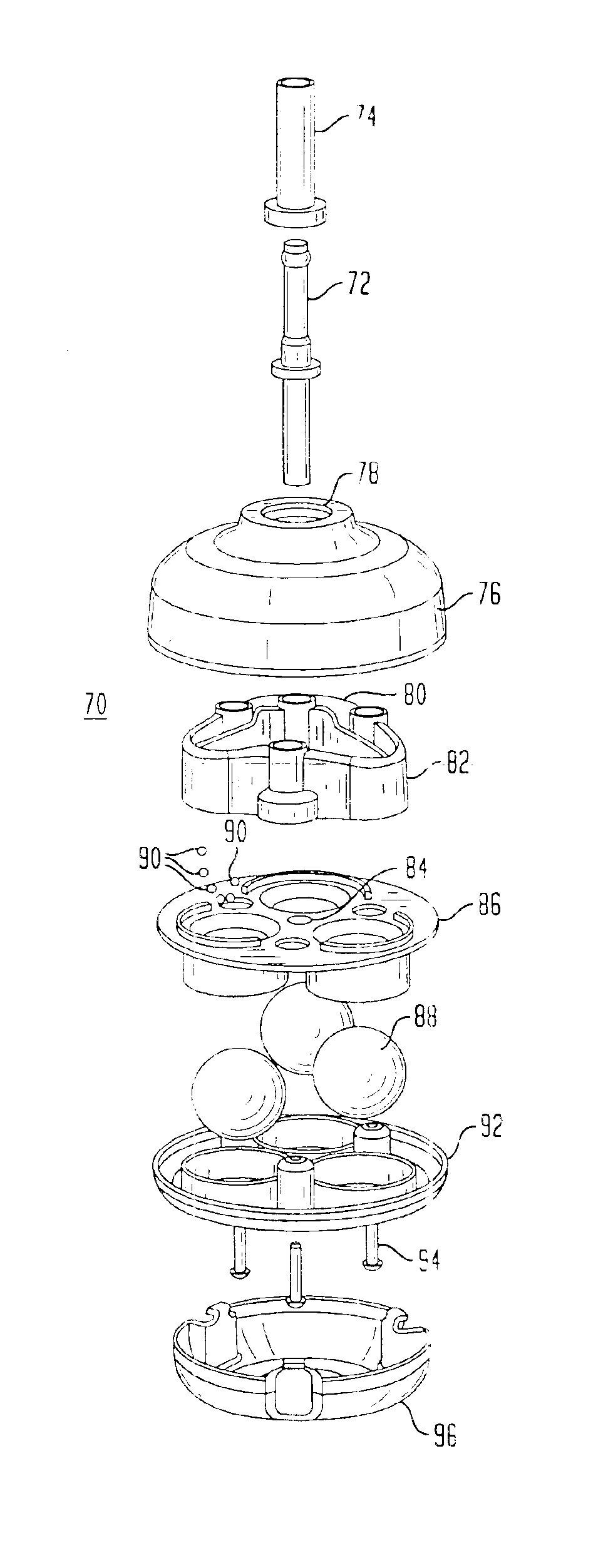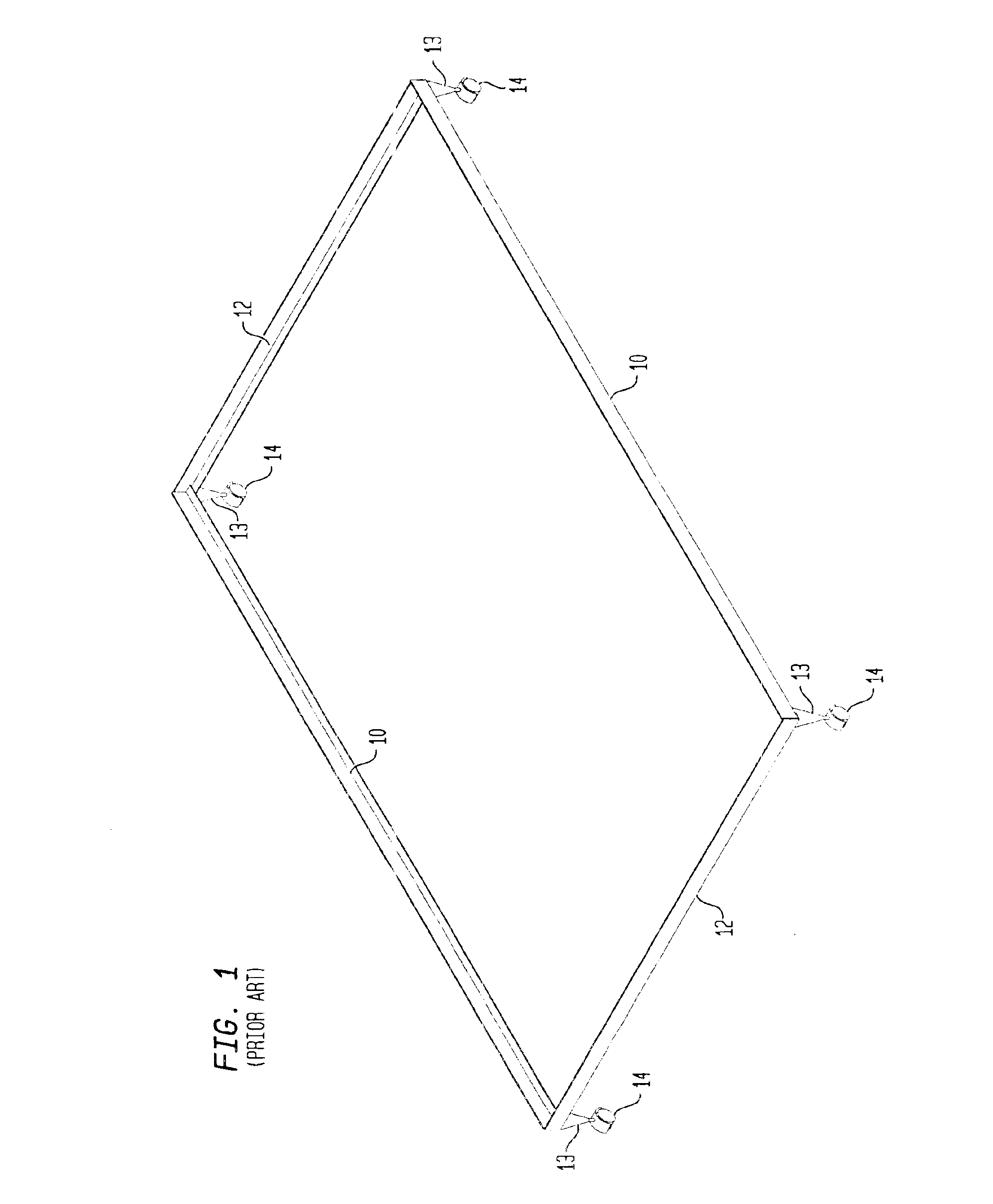Caster assembly for a bed frame member or furniture
a technology of casters and bed frames, which is applied in the direction of bedstands, chairs, manufacturing tools, etc., can solve the problems of difficult to achieve the initial movement of the bed, difficult to get the swivel action to operate easily, and general difficulty in distributing the weight. , to achieve the effect of preventing severe indentation in the floor, eliminating single bending moment, and distributing weigh
- Summary
- Abstract
- Description
- Claims
- Application Information
AI Technical Summary
Benefits of technology
Problems solved by technology
Method used
Image
Examples
Embodiment Construction
Referring now to FIG. 1, there is shown a perspective view of a conventional bed frame with which the present invention can be applied. It should be noted, however, that while the FIG. 1 embodiment of the present invention is initially shown and described specifically for use with a bed frame, the broader aspects of the invention make it applicable to any item of furniture with the same advantages and improvements.
Thus, in FIG. 1, the conventional bed frame is comprised of a pair of side rails 10 and cross members 12. The number of cross member may vary depending upon the particular bed, and its size, that is, there may be one or more intermediate cross members that provide additional support to the box spring and mattress when assembled. The side rails 10 and cross members 12 are normally constructed of L-shaped angle iron. As shown, there are legs 13 that are normally located on the cross members 12 or the side rails 10 depending on the particular construction and, if any further ...
PUM
 Login to View More
Login to View More Abstract
Description
Claims
Application Information
 Login to View More
Login to View More - R&D
- Intellectual Property
- Life Sciences
- Materials
- Tech Scout
- Unparalleled Data Quality
- Higher Quality Content
- 60% Fewer Hallucinations
Browse by: Latest US Patents, China's latest patents, Technical Efficacy Thesaurus, Application Domain, Technology Topic, Popular Technical Reports.
© 2025 PatSnap. All rights reserved.Legal|Privacy policy|Modern Slavery Act Transparency Statement|Sitemap|About US| Contact US: help@patsnap.com



